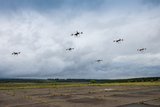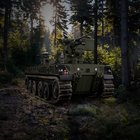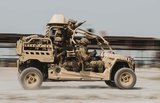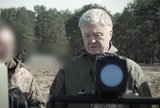US Air Force develops plan for filling unmanned aircraft system positions
Air Force leaders are taking a two-pronged approach to address the increasing need for pilots of unmanned aircraft systems in Afghanistan and Iraq, an Air Force official said recently.
The first approach will use a small percentage of undergraduate pilot training graduates for the short term. The second will examine the potential for a distinct career path for Airmen to fly unmanned aircraft.
"The UPT approach will happen quickly," said Col. Pete Lee, chief of the operational training division in Air Staff Operations.
In the next couple of weeks, Air Force officials will select approximately 10 percent of UPT graduates to begin UAS training when they graduate in October. Their UAS training will be at Creech Air Force Base, Nevada.
After completing a standard UAS tour, UPT Airmen will receive a follow-on assignment to a manned aircraft, Colonel Lee added.
In January 2009, the Air Force will begin the second approach, a small-group testing of a program to train approximately 10 active-duty officers to specifically fly unmanned aircraft. Colonel Lee said the lessons learned from the first group will be used to train a second group of 10. Initial training will begin in Pueblo, Colo., where the Air Force conducts introductory flight screening. UAS-specific training will follow with full major weapons system qualification completed at Creech.
"The plan is to develop and validate training programs that prepare non-UPT pilots for wartime UAS duty," Colonel Lee said. "We will continue to uphold the highest levels of Air Force flight safety standards."
The colonel said this is a historic time for the Air Force.
"Pilots flying unmanned aircraft today and Airmen selected for the new UAS training program are charting ground-breaking paths for the Air Force," Colonel Lee said. "They are truly trailblazers."
The Air Force general in charge of oversight of air, nuclear, space, cyber and weather operations for the Air Staff said the demand for UAS in theater is critical.
"The combat contributions of unmanned aircraft systems in today's fight have surpassed all expectations and have taken a crucial role in our ongoing operations in Iraq and Afghanistan," said Lt. Gen. Daniel Darnell, Air Force deputy chief of staff for operations, plans and requirements.
"The surveillance-only role of UAS has rapidly expanded to include strike, force protection, and additional intelligence, surveillance and reconnaissance missions," the general added.
Colonel Lee said unmanned aircraft are the tip of the spear for Air Force combat operations in Afghanistan and Iraq because of "their ability to identify, track and engage our enemies."
From January to August of this year, MQ-1 Predators and MQ-9 Reapers flew more than 4,400 sorties, logging over 81,800 combat flight hours. They also engaged more than 9,900 ISR targets and were an integral asset during more than 300 incidents of troops in contact with the enemy and more than 1,000 raids.
by Master Sgt. Russell P. Petcoff
Secretary of the Air Force Public Affairs
More from Uncrewed Vehicles
-
![Ready for the race: Air separation drone swarms vs. air defence systems]()
Ready for the race: Air separation drone swarms vs. air defence systems
As the dynamics of aerial combat rapidly evolve, Chinese scientists have engineered a sophisticated air separation drone model that can fragment into up to six drones, each capable of executing distinct battlefield roles and challenging the efficacy of current anti-drone defences such as the UK’s Dragonfire laser system.
-
![Israel’s MALE UAVs ‘must adapt’ to Iranian-made air defences]()
Israel’s MALE UAVs ‘must adapt’ to Iranian-made air defences
Advancements in air defence technologies have begun to reshape aerial combat dynamics in the Middle East, as illustrated by recent events involving the Israeli Air Force and Hezbollah.
-
![Hundreds more UAS sent to Ukraine forces with thousands more on the way]()
Hundreds more UAS sent to Ukraine forces with thousands more on the way
Both sides of the Russia-Ukraine war have been using UAS for effective low-cost attacks, as well as impactful web and social media footage. Thousands more have now been committed to Ukrainian forces.
-
![AI and software companies selected for US Army Robotic Combat Vehicle subsystems]()
AI and software companies selected for US Army Robotic Combat Vehicle subsystems
The US Army has intentions to develop light, medium and heavy variants of the Robotic Combat Vehicle (RCV) as part of the branche’s Next Generation Combat Vehicle family.
-
![DroneShield to improve software of DroneSentry-X C-UAS system under new contract]()
DroneShield to improve software of DroneSentry-X C-UAS system under new contract
DroneSentry-X, a cross-vehicle compatible, automated 360° C-UAS detect and defeat device, can offer 360° awareness and protection using integrated sensors. According to its manufacturer, it is suitable for mobile operations, on-site surveillance and on-the-move missions.
-
![Ukraine takes delivery of new indigenous C-UAS systems]()
Ukraine takes delivery of new indigenous C-UAS systems
Funded by the country’s former president, the new C-UAS systems will be sent to the frontline where they have already been tested against Russian invading forces.


























